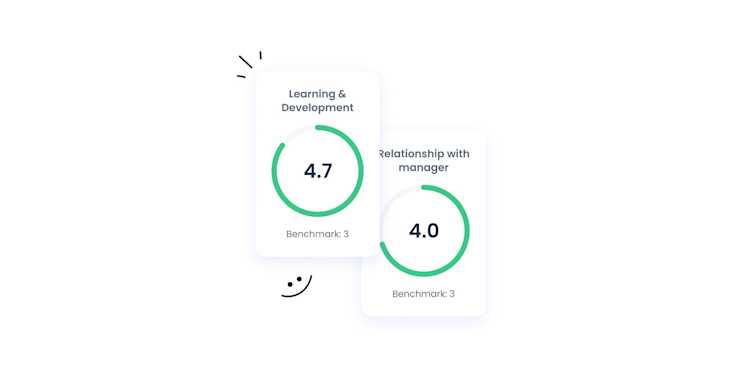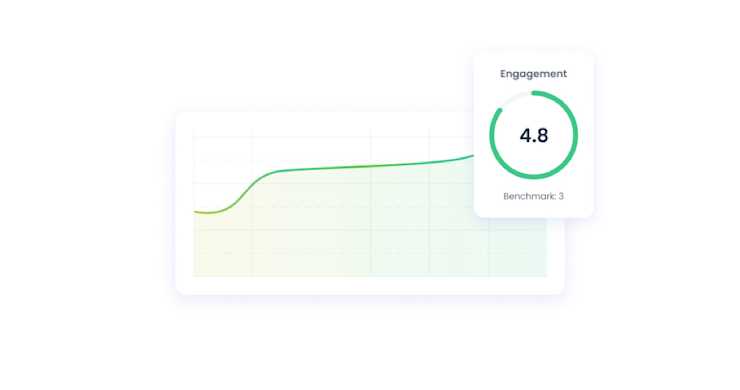Employee attrition rate is an important metric for businesses to consider. Calculating employee attrition helps you measure the success of recruitment strategies, highlight potential problems in the workplace, and inform your retention strategies.
In this article, we will provide a guide on how to calculate employee attrition and the necessary steps for developing retention strategies for reducing employee attrition.
The employee attrition rate formula
The formula for calculating the annual employee attrition rate is:
Attrition rate = (Number of employees who leave during a certain period / Average number of employees) x 100%
For example, if 20 employees leave a company during a year and the average number of employees during that year was 100, the attrition rate would be 20% (20/100 x 100%).
(If you want to instead calculate the retention rate, you flip the employee attrition formula on its head. Instead of using the number of employees leaving in the formula, you simply use the number of employees staying instead.)
Different types of employee attrition
Before you calculate the attrition rate, or employee churn rate, it's important to understand that there are different reasons why employees are leaving. While high attrition rates are usually problematic, not all attrition is the same.
Employee attrition is typically caused by a combination of internal and external factors. Internal factors include lack of job satisfaction, poor management, or low wages. External factors can be, for example, better job opportunities elsewhere or changes in the local economy.
It's also essential to make a distinction between unwanted attrition and wanted attrition, also known as regretted attrition vs non-regretted attrition, or voluntary attrition vs involuntary attrition.
Regretted attrition consists of the employees that left the company, but that the organisation would have liked to keep.
Non-regretted attrition consists of the employees leaving the organisation for other reasons, such as retirement, contracts ending or because their contract was terminated for some reason.
It is also important to consider the impact of company culture on employee attrition. A positive work environment with strong leadership and clear expectations can help to reduce employee turnover. Employers also need to consider offering competitive benefits and incentives to retain employees. By understanding the causes of employee attrition, employers can take steps to reduce turnover and create a more productive and successful workplace.
Identifying early warning signs of employee attrition
Employee attrition can be difficult to predict, but there are definitely warning signs to watch out for. Things to look out for include:
Decreased productivity or job performance
Increased absenteeism or tardiness
Reduced engagement or motivation
Increased complaints or conflicts with coworkers or management
Expressions of dissatisfaction with the company or job
Increased job searching or interviewing with other companies
Reduced participation in company events or activities
Lack of interest in learning new skills or taking on additional responsibilities
Failure to meet goals or targets
High turnover rate among peers
It is important for employers to take proactive steps to address early warning signs of employee attrition. This could include providing additional training and development opportunities, offering flexible work arrangements, or providing more meaningful recognition and rewards. Taking these steps can help create a positive work environment and reduce the risk of unwanted attrition.
Developing strategies to reduce employee attrition
Once you have identified the causes of employee attrition, it's time to develop strategies to reduce it. There are several different things to consider, such as:
Improved learning and development opportunities
In addition to these strategies, employers should also focus on creating a positive work environment. This can be done by encouraging open communication between employees and management, recognising and rewarding team members for their hard work, and providing employees with the resources and support they need to succeed.
Related reading: What is a "stay interview" - and what questions should you ask?

Managers are key to increasing employee retention
It is also important to consider the role of leadership in employee attrition. Leaders should be aware of the impact their behavior has on employee morale and engagement. They should strive to create an environment that encourages collaboration and open communication, and that rewards employees for their hard work and dedication.
External factors contributing to employee attrition
External factors contributing to employee attrition can include changes in the local job market or economic conditions. Employers should stay up to date on the latest news and trends in their industry and local labor market. This information can be used to inform recruitment and retention strategies.
It is also important to consider the impact of external factors on employee morale. For example, if the local job market is weak, employees may feel less secure in their positions and be more likely to look for other opportunities. Employers should be aware of this and take steps to ensure that employees feel valued and supported.
Evaluate the effectiveness of retention strategies
Once employers have implemented retention strategies, it is important to evaluate their effectiveness. This can be done by measuring employee turnover rates over time and comparing them to industry standards. Employers should also track any changes or improvements made to recruitment and retention practices to measure their impact.
Monitor and track employee attrition
Businesses can use technology to track and monitor employee attrition. This includes using software such as HR analytics tools or workforce management systems. These tools can be used to analyse employee data and identify patterns or trends in employee turnover. They can also be used to monitor internal recruitment and retention practices and make adjustments as needed.
By following these steps, employers can develop an effective strategy for calculating employee attrition and implementing retention strategies for reducing it. By understanding the causes of employee attrition and tracking its impact over time, employers can make informed decisions about their recruitment and retention strategies. In the Eletive platform you can find the feature Attrition Risk that can anticipate attrition and help HR take preventive actions to reduce employee turnover. Address issues leading to dissatisfaction among your employees and take relevant action to increase employee engagement.
Measure employee engagement in real time
To reduce unwanted attrition, it's not enough to measure the annual employee attrition rate. Once employees have left the organisation, it's too late to do anything about it. Therefore, measuring employee engagement in real time is often the most efficient way to reduce staff turnover. By regularly sending out pulse surveys to the workforce, you will be able to monitor – and continuously improve – the employee experience. This will set you up for success, in your efforts to reduce staff attrition. Eletive Attrition Risk


























